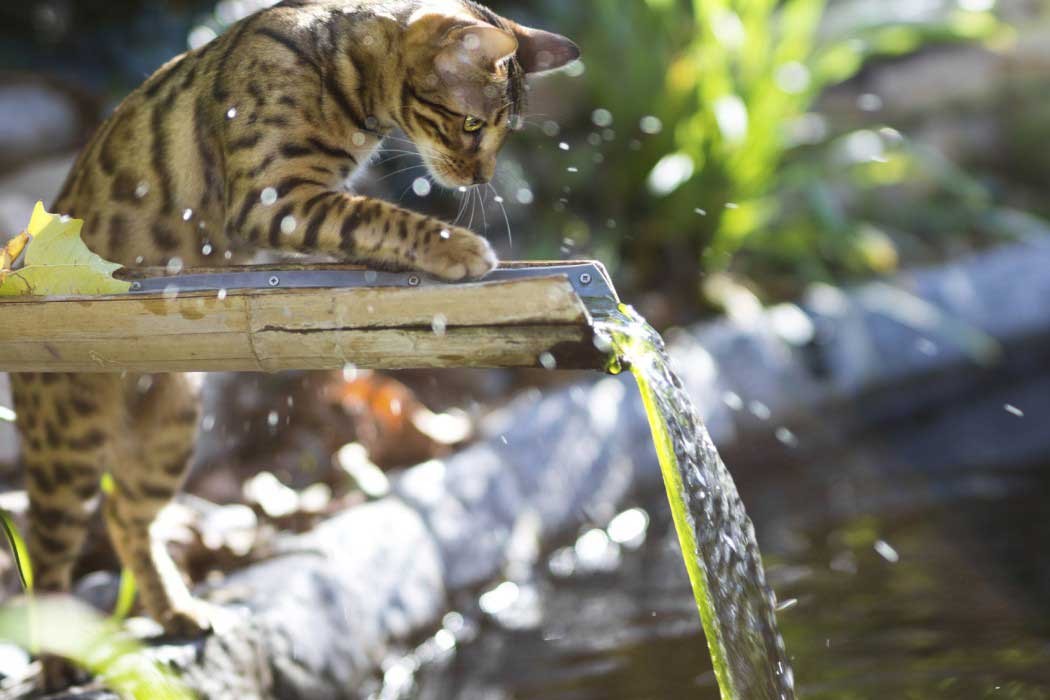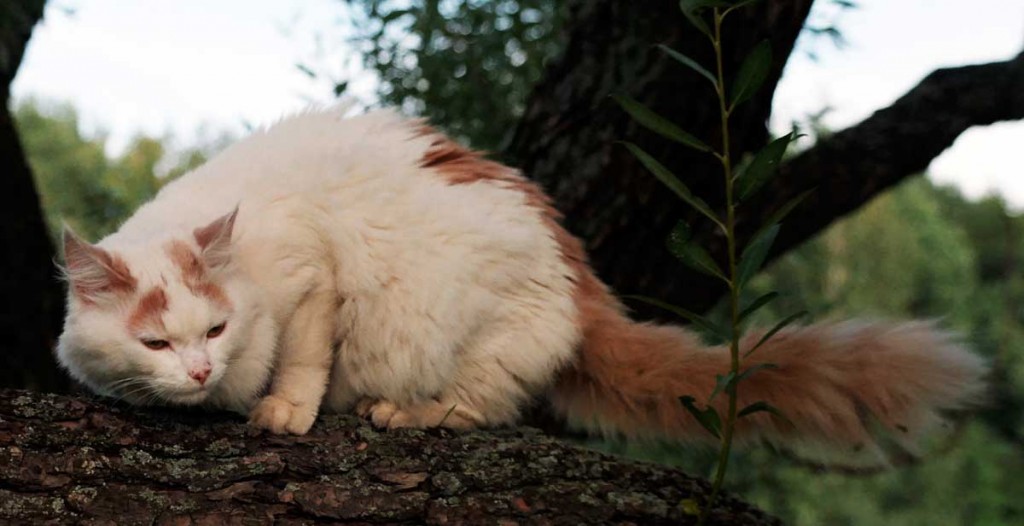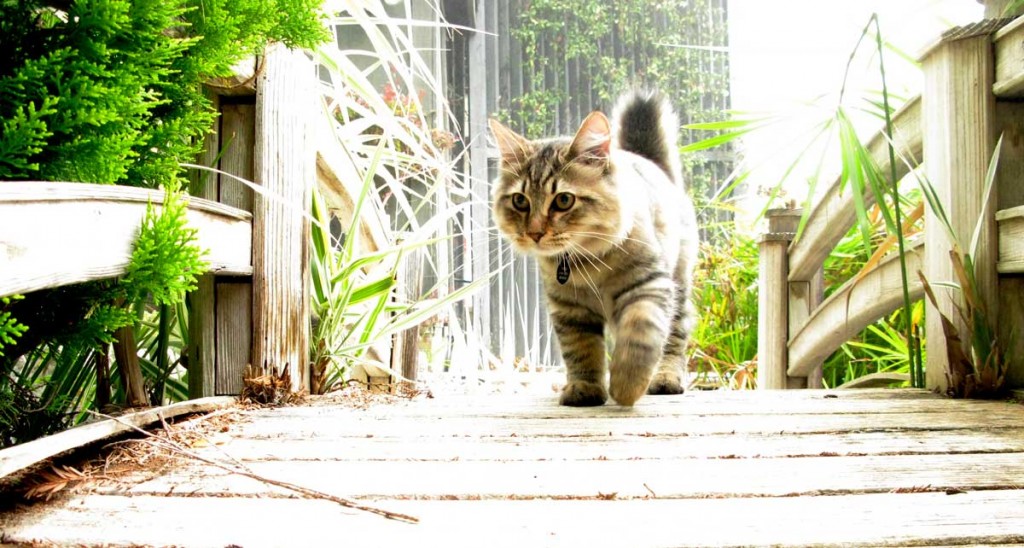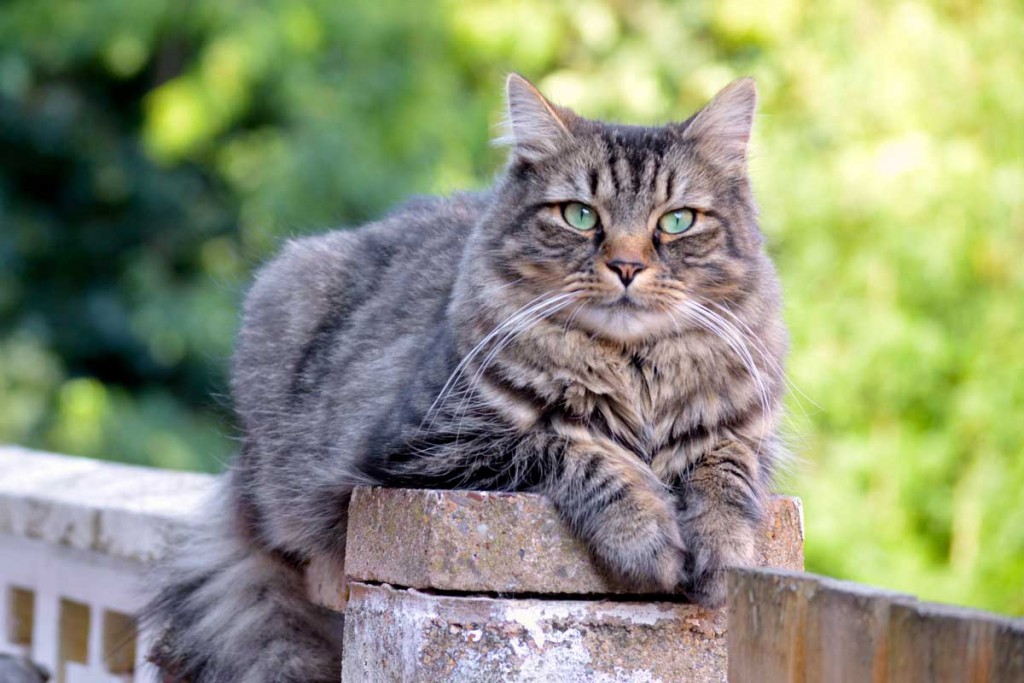You may have heard that cats don’t like water. Of course, until recently, you probably assumed cats wouldn’t like scaling rock faces or zooming down city streets on a bicycle.
Plenty of cats have zero interest in interacting with H2O outside their water bowl, but there are breeds that are more likely to enjoy water than others. There are even some that are known to partake in the occasional swim.
So if you’re looking for a feline friend to accompany you on paddling expeditions, these breeds might be your best bet.
However, keep in mind that all cats have unique personalities and even one on this list might not want to join you on a boat or hang ten. Also, if you have your heart set on one of these breeds, we urge you to adopt from a breed-specific rescue group and skip the breeders.
1. Turkish Van
Photo: Wikimedia Commons
This breed hails from Turkey’s Lake Van region, and its affinity for water has earned it the nickname “the swimming cat.” These cats have semi-long fur with a cashmere-like feel that’s naturally water-repellant, so they’ll emerge from a swim relatively dry.
Turkish Vans also have large paws and powerful hind legs, making them impressive jumpers and climbers. They’re active, highly intelligent animals, and while modern Turkish Vans rarely encounter large bodies of water, don’t be surprised if yours plays in his water bowl, takes a dip in the pool or joins you in the bathtub. And be sure to keep the lid down or you just might find your kitty has turned the toilet into his own personal fishing bowl.
In the video below, watch a Turkish Van named Merlin take a short canoe ride and then swim back to shore.
2. Turkish Angora
Photo: Wikimedia Commons
These silky-coated kitties also come from Turkey, and while they may look delicate, they’re strong, willful cats that require interactive play. They’re very clever and easily trained, and they’ll often bond with one particular person in a family, becoming their constant companion.
In addition to loving to climb, this breed is also often drawn to water. They’ll splash in sinks, and may come running when they hear the sound of the shower. Outdoor Turkish Angoras have even been known to paddle in shallow ponds and streams.
If you want to entertain your Turkish Angora, leave the sink dripping and let her play like the Angora in the video below.
3. Maine Coon
Photo: Barbara Muller-Walter/flickr
The largest breed of domestic cat, the Maine Coon has long or medium hair that’s water-resistant, enabling it to swim, as well as withstand cold temperatures. These intelligent cats are fascinated by water, which perhaps stems from the breed’s history of working as pest control on ships.
Maine Coons have a reputation for learning to turn on the faucet, as well as scooping water from toilet bowls and dunking toys in their water dishes. Some Maine Coon owners say they’ve taken to keeping their cats’ water bowls inside enclosures to help contain the splatter.
4. Bengal
Photo: Christopher Yeoh/flickr
The Bengal is a hybrid breed of domestic cat that results from crossing a domestic feline with an Asian leopard cat. Typically, Bengals that are kept as pets are at least four generations (F4) removed from the leopard cat; however, some states consider them an exotic breed and forbid residents from owning them.
These kitties love to play in water and will often dip paws into water dishes and swat at anything that floats. Bengal owners will often fill the tub with water and toss in a few toys to keep their kitties entertained.
But Bengals don’t just splash in water — many also enjoy going for a dip, such as the kitten in this video.
5. American Bobtail
Photo: torbakhopper/flickr
These kitties are often referred to as the dogs of the cat world because they’re easy to train, they’ll walk on a leash and they love to play in water.
American Bobtails are social cats that will demand attention if they’re not getting it, but it’s hard to not to notice this breed. They’re extremely active and intelligent cats that will stalk their toys, play fetch and sometimes even turn on the faucet when they want to splash around.
6. Japanese Bobtail
Photo: Wikimedia Commons
Like the American Bobtail, these short-tailed cats are often drawn to water. They may not jump in the pool or join you for a bath; however, they will dunk their paws in their water dish, the toilet, your glass — whatever they can find. They’re also easy to train and enjoy playing fetch and walking on a leash.
These playful cats often make good travel partners, and they hate to be left alone so a companion — be it another cat or even a dog — is a must.
7. Norwegian Forest cat
Photo: Jodie C/flickr
These gorgeous cats have a thick, water-resistant coat that’s designed to keep them warm and dry, and they may partake in the occasional swim. Norwegian forest cats are excellent hunters that are known to catch birds, rodents and fish — so be wary of letting yours too close to the aquarium or koi pond.
These felines love to climb as high as possible, and unlike some cats, they have no fear when it comes to descending headfirst. Norwegian forest cats crave companionship, but they won’t demand constant attention, and while they’re not known to be a chatty breed, they’ll sometimes make a unique chirping sound when excited.
8. Abyssinian
Photo: Andrew/flickr
These energetic felines are constantly in motion — jumping, climbing, chasing and swatting — and require a lot of interaction. They’re very social cats, but while they appreciate attention and affection, they’re typically not lap cats.
Abyssinians have an unusual affinity for water and enjoy large water bowls or even a fountain to splash in. Leave the faucet running for a bit and you’ll both be entertained.
9. Manx
Photo: Hernan Senki/flickr
The Manx’s short tail is the result of a genetic mutation that was intensified by the cats’ remote location on the Isle of Man, and perhaps the fact that the breed derived from an island explains their attraction to water.
These cats are intelligent and social, and they’re often compared to dogs because they travel well, enjoy a good game of fetch and will often carry toys around in their mouths. In fact they’re sometimes called the perfect cat for dog people.













